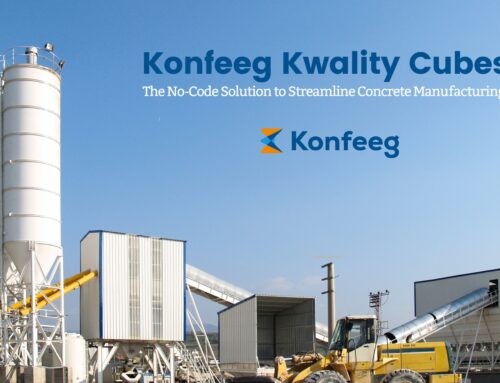Traditional concrete, though highly durable and widely used, has its challenges. It cracks over time and offers little insight into its internal condition. However, new technologies now allow concrete to become “smart.” With innovations coming at an astonishing rate, smart concrete is disrupting the construction industry and paving the way for more intelligent infrastructure. But what exactly is smart concrete, and how is it revolutionizing the construction landscape?
Table of Contents
The Evolution of Smart Concrete
Advancements have come swiftly as technology takes concrete to a new level of intelligence. Researchers continue exploring new material formulations, additive types, curing behaviours, and infrastructure applications. Here are some of the most exciting innovations:
Self-Healing Concrete
Smart concrete can now autonomously repair minor flaws and cracks from the inside. The two primary methods are intrinsic self-healing using bacterial encapsulation and extrinsic self-healing utilizing shape memory polymers (SMPs). Within the concrete, capsules contain a healing agent released upon crack formation, re-solidifying the fracture. SMPs embedded in the matrix alter shape when cracked to push walls back together. Both considerably extend service life.
Anti-icing/Deicing Concrete
Conductive concrete surfaces can be connected to an electric current, causing them to heat up through resistance gently. This material’s road surfaces and pedestrian walkways stay ice-free in winter, improving safety without corrosive salt or other chemicals. Some varieties can change color, indicating treatment is needed.
3D Printing of Concrete Structures
Large-scale 3D concrete printing allows complex architectural designs to be digitally modeled and deposited layer-by-layer using robotics. Entire houses, bridge sections, and more can be built with unprecedented geometric freedom and minimal human labor. Printed elements set very quickly and are remarkably strong. Combined with smart binders, it opens new possibilities.
Concrete Solar Cells
Multi-functional panels can be manufactured by dispersing photovoltaic materials like silicon throughout the cementitious matrix. They generate electricity through exposure to light while serving as building skins. Any surface from roof to road can become a source of renewable energy. Surplus power feeds back to the grid or is used locally.
Smart Infrastructure Sensing
When integrated into structures, smart concrete can take on sensing capabilities far beyond basic strain monitoring. Embedded sensors may detect parameters like moisture, shock/vibration, air quality, and gas/fluid leaks, transmitting real-time insight to central systems. It enables conditions-based maintenance of assets to maximize performance and safety.
Many smart concrete solutions aim to resolve traditional concrete shortcomings through material science innovation. Some key benefits are self-repair, longevity, heating functions, lower environmental impact, and the ability to sense infrastructure. Combined with digital technologies, it paves the way for highly intelligent buildings and civic realms.
Applications of Smart Concrete
As digitization further suffuses the construction, switching to smart concrete will redefine development norms. Its widespread adoption promises to enhance infrastructure resilience, sustainability, safety, and insight like never before. Today’s developments glimpse tomorrow’s advanced, decentralized, and eco-friendly built environments supported by such transformational materials.
The diversity of smart concrete formulations gives rise to wide-ranging uses across the construction sphere. Here are some prominent application areas where it brings revolutionary enhancements:
Roads and Highways
Deicing concrete enables year-round access without hazardous chemicals. Structural monitoring extends pavement lifespan through pre-failure detection. 3D printed or solar cell integrated surfaces provide multi-functionality. Pavegen technologies harvest kinetic energy from every step and vehicular motion.
Bridges
Fiber-reinforced and self-consolidating varieties simplify cast-in-place construction. Self-monitoring sections alert authorities to deterioration in need of repair, averting hazards. Self-healing kinds automatically mend cracks caused by metal corrosion or seismic activity.
Buildings
3D-printed smart concrete facades and structures introduce fluid, sculptural aesthetics. Wall panels and floors integrate programmable color change, energy generation, or ambient heating. “Internet of concrete” allows interconnected sensing of occupancy, air quality, and structural welfare.
Underground Utilities
Reinforced tunnel segments speed up boring machine breakthroughs. Self-compacting special mixes fill tightly spaced areas neatly without voids. Leak detection systems pinpoint fluid intrusions before flooding or contamination occurs.
Marine Applications
Smart marine grouts prevent shoreline erosion. Self-deploying breakwater modules protect coasts dynamically. Vibrating pile systems compact ground densely underneath ports and harbors. Wave energy collection from tidal barriers supplies renewable power.
Land Development
Permeable smart concrete enables sustainable urban stormwater management. Grading and compaction proceed efficiently thanks to real-time diagnostics. Retaining walls regulate saturation levels and redistribute pressure intelligently.
Optimize Your Quality Control Process with Konfeeg
Konfeeg is a no-code low-code platform from Cloudely. Kwality Cubes, K-Cubes in short, is a Quality Control Module from Konfeeg that assists in optimizing concrete plant operations helping in high-quality concrete production. To witness K-Cubes in action, write to us at hello@cloudely.com.






